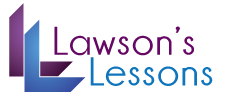Express without speaking
Facial Expression
Objective: After completing this activity, students will be able to give an appropriate speech of the topic.
Materials: Students will bring a mirror. Teacher prepares newspapers.
Steps:
1.List 5 adjectives; happy, sad, angry, fun, and depressed.
2. Students make an appropriate face each adjective. And, make sure it is right aspect or not by using a mirror.
3. Hand out articles of newspaper randomly to all students.
4. Read it and practice facial expression.
5. Pair students and read an article with facial expression each other.
6. Divide 5 groups and give an adjective each group.
Result: Students will make 1 paragraph story about given adjective and practice facial expression as an assignment.
Aki Kato
September 12, 2007
Facial Expressions
Objective: Students will learn the importance of facial expressions in their speech.
Materials: Two sets of note cards (five in each set). One set of note cards has different emotions on them (sad, excite, tired, cranky, nervous), the other set of note cards has different sentences on them (YAHOO!!! I just won the lottery! My pet fish just died a terrible death. I stayed up all night long working on my speech homework…I am soooo sleepy. I am so mad at my brother; I can’t believe he read my diary!). Students should also have a copy of their speeches.
Steps:
1. Ask for five volunteers.
2. The students should come up one at a time and draw a note card from each stack. The student will then read the sentence on the card using the emotion on the other card. Make sure that students get an emotion that does not match up with the sentence. For example, Jimmy draws the sad card but reads the sentence, “YAHOO!!! I just won the lottery!”
3. After all five volunteers have finished, process the activity with the class. Stimulate discussion by asking questions like, “Did you believe what your classmates were saying?” Ask them how each student could have made themselves more believable to the class (Jimmy did not seem excited that he won the lottery, his emotion did not match with his sentence…Jimmy should have been excited about winning the lottery).
4. Touch briefly on facial expressions and how they make a speech more interesting. For example, say a line like…I am so excited to teach you today…but use no emotion when saying the line. Point out that this is uninteresting and unbelievable. Facial expressions not only make a speech more interesting, but they make a speaker appear to be more credible.
Results: Students will practice reciting their speeches to a partner using appropriate facial expressions for the next 10-15 minutes.
Danielle Helzer
06-07-07
Facial Expressions
Face-Off
Topic: Understanding and practicing a variety of facial expressions within multiple speeches.
Objective: Following the lesson, students will be able to demonstrate appropriate and effective facial expressions for a variety of speeches and situations.
Materials: Pre-made slips of paper with a variety of types of speeches and topics/prompts.
A computer with overhead projector, to project video clips.
Steps:
1. The teacher should show brief clips of a variety of different speeches. She should then ask the students how the speakers’ facial expressions complement, enhance, and/or emote the feelings or purposes behind their speeches. Solicit answers and discuss.
Examples:
http://www.youtube.com/watch?v=cu_nMi1Mn_Y&feature=related (0:53)
http://www.youtube.com/watch?v=Lq-MuEms00w
2. To begin the activity, the teacher will place students in groups of two or three.
3. Students will be given slips of paper that have a variety of types of speeches and topics/prompts on them.
4. Students should practice (the content of these little “speeches” doesn’t really matter) appropriate and effective facial experiences for the speech topics and situations written on those slips of paper.
5. Teacher will monitor students’ activity and ask certain students (according to her discretion) to demonstrate for the class.
Result: Students will be exposed (through video clips and watching classmates) to a variety of facial expressions and will understand which expressions are appropriate and effective for certain situations.
Elizabeth Thomas
September 16th, 2009
